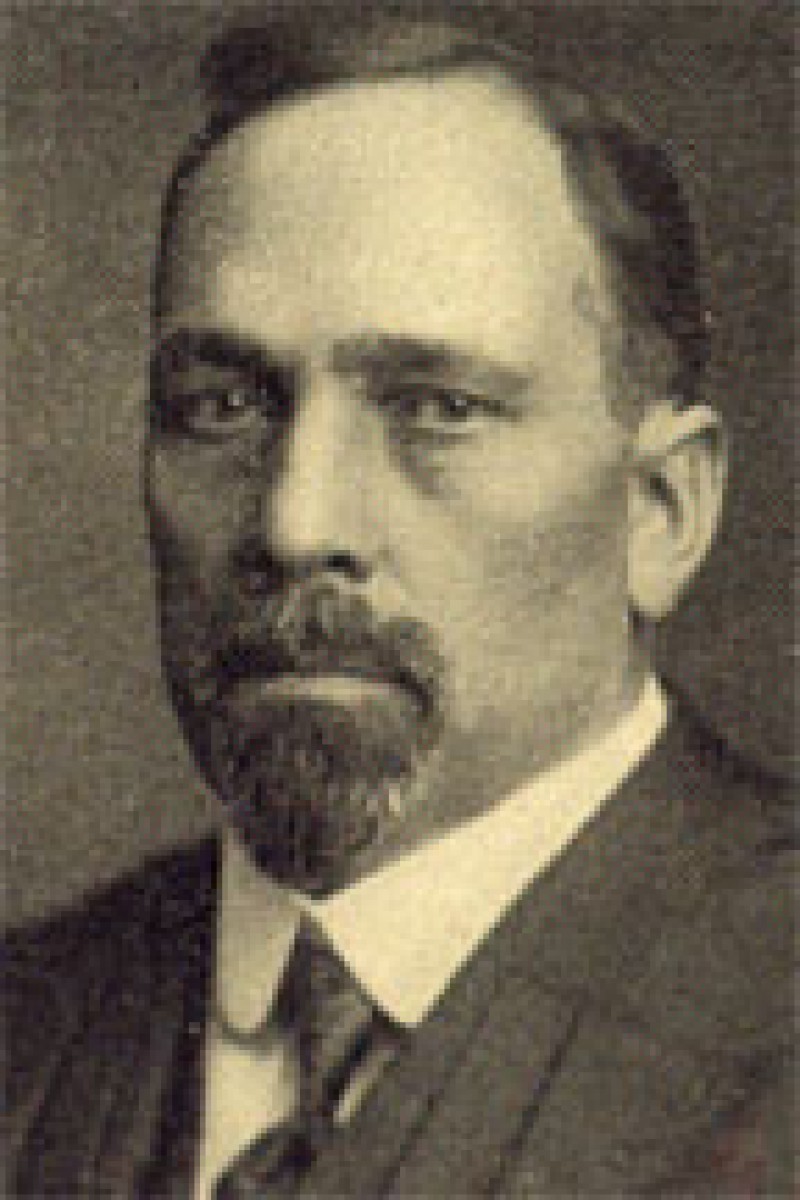Carrington Tanner Marshall
The first public office Carrington Tanner Marshall held was Chief Justice of the Supreme Court of Ohio. He ably guided the court for 12 years and after he left the Court, he edited “A History of the Courts and Lawyers of Ohio,” which documented the history of the various courts and the judges and attorneys who served in them. Later, his legal expertise served him as a judge at the Nuremberg War trials, which prosecuted Nazi war criminals.
Marshall was born June 17, 1869 in a log house on a farm near Zanesville to John Wesley and Rachel Amy Tanner Marshall. After graduation from Zanesville High School in 1886, Marshall took a course in bookkeeping and accounting. For three years, he taught school and worked as a bookkeeper for a lumber company.
In 1889, Marshall entered the Cincinnati Law School (now University of Cincinnati Law School) and graduated with a law degree in 1892. His alma mater awarded him the honorary degree of doctor of laws in 1925. Marshall was admitted to practice law in Ohio in 1892 and established a legal practice in Zanesville. From 1892 to 1920, he was involved in the general practice of law and appeared before all state and federal courts and commissions.
On Nov. 2, 1920, the voters of Ohio elected Marshall as Chief Justice. He defeated the incumbent Chief Justice Hugh L. Nichols by more than 209,000 votes. He was re-elected him on Nov. 2, 1926. His memorial in the Ohio State Reports stated:
“When Judge Marshall became Chief Justice, many difficult tasks faced the Supreme Court, and his nearly thirty years as a rugged active practitioner proved to be a good training and background for the performance of these tasks. The elaborate revision of the Ohio Constitution in 1912 created a multitude of important constitutional questions which were reaching the Supreme Court when he ascended to the bench. New laws were enacted pursuant to the new constitutional provisions. Chief Justice Marshall and his associates were charged with the responsibility of deciding many constitutional questions which would vitally affect the State for many generations.”
One case before the Court was State of Ohio ex rel. Bryant v. Akron Metropolitan Park District for Summit County et al. State of Ohio ex rel. Wadsworth v. Zangerle, Auditor of Cuyahoga County et al [281 U.S. 74 United States Supreme Court (1930)]. In 1912, the voters authorized an amendment to the Ohio Constitution that provided that “no law shall be held unconstitutional and void by the Supreme Court without the concurrence of at least all but one of the judges, except in the affirmance of a judgment of the court of appeals declaring a law unconstitutional and void.”
Two suits were brought by two taxpayers challenging the legality of the Park District Act of the State (1920). One sued the Akron park district, while the other sued the Cleveland park district. The law provided for the creation of park districts, which operated with paid staff, including a police force with the power to make arrests. To fund their activities, the park district could levy taxes. Chief Justice Marshall wrote the minority opinion, which upheld the validity of the statute. Justice Reynolds Kinkade was the only Justice to concur. The remaining five Justices dissented, but a total of six Justices needed to agree to make it unconstitutional. Thus, the law was upheld. The case was appealed to the U.S. Supreme Court. One of the arguments in the appeal stated that the agreement provision in the Ohio Constitution violated the 14th Amendment of the federal Constitution denying due process. Chief Justice Charles Evans Hughes upheld the validity of the Park District law and the constitutional amendment. The amendment was later repealed in 1968.
On Nov. 8, 1932, Chief Justice Marshall was defeated for re-election to the Supreme Court by Carl V. Weygandt.
Chief Justice Marshall established a law practice in Columbus. From 1933 to 1949, he assisted clients with their legal needs. He retired at age 80. In 1934, his important history of the legal system in Ohio was published. This four-volume set described the evolution of Ohio’s courts, the history of the state Constitution and important statutes, legal precedents, and biographies of noted jurists and lawyers.
During his lengthy career, Marshall served as chairman of the judicial section of the American Bar Association and for two years was chairman of the judicial section of the Ohio State Bar Association. Other professional commitments included service as chairman of the Committee for the Direction for Study of Judicial Administration in Ohio and as president of the Ohio Judicial Council.
Marshall agreed to serve his country as presiding judge of the “Judge’s Trial” (The United States of America vs. Josef Altstotter,et.al (1947). He was appointed Feb. 13, 1947 by General Lucius Clay of the Office of Military Government for Germany. This trial was one of 12 trials held by the United States in Nuremberg after the end of World War II. On trial were 16 German judges and lawyers. They were charged with war crimes and crimes against humanity, including the abuse of the judicial and penal process that resulted in mass murder, torture, plunder of private property and slave labor. Of the defendants, 10 were found guilty, four were acquitted, one was excused due to illness and one committed suicide before the beginning of the trial. Due to serious illness, Chief Justice Marshall resigned on June 19, 1947 and returned to Ohio.
In June, 1900, he married Dora Foltz and they had one child, Constance. Marshall died on June 28, 1958 at age 89 at his home in Bexley. The funeral was on June 30, 1958 at Denton Donaldson and Kuhn Funeral Home in Columbus. He was buried at Zanesville Memorial Park in Zanesville.

b. June 17, 1869
d. June 28, 1958
87th Justice of the Supreme Court of Ohio
TERM
Jan 1, 1921
to Dec 31, 1932
